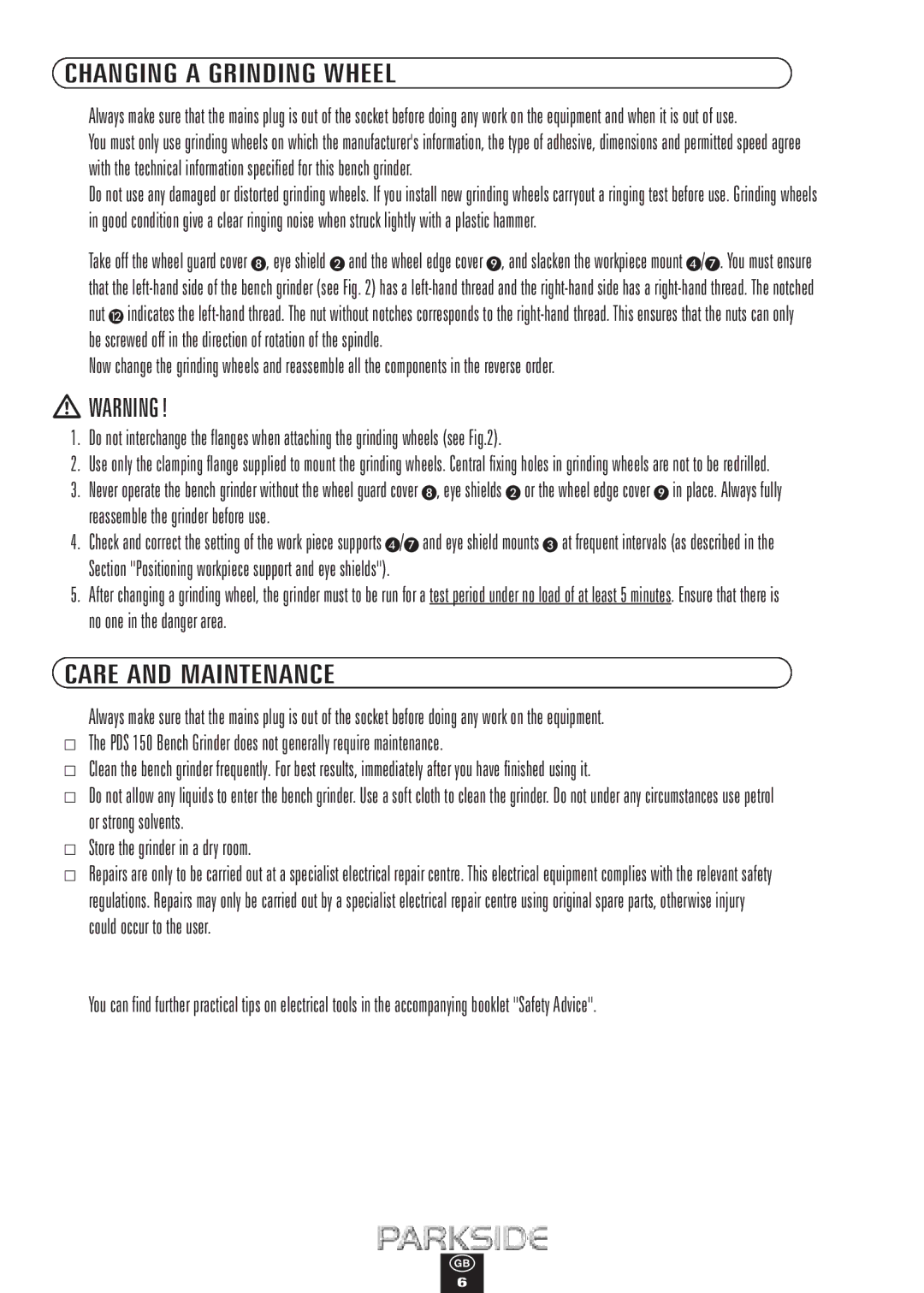PDS 150 specifications
The Kompernass PDS 150 is a versatile and efficient tool designed for both home improvement enthusiasts and professional tradespeople. This power device stands out in the market due to its innovative features and advanced technologies that cater to a variety of applications, including sanding, polishing, and more.One of the core characteristics of the PDS 150 is its powerful motor, which delivers impressive performance to tackle even the most demanding tasks. With a robust wattage, it ensures that users can complete their projects quickly and effectively, whether they are working on wood, metal, or even delicate surfaces.
The PDS 150 incorporates a unique dust extraction system that enhances its efficiency and ensures a clean workspace. This system captures debris and dust particles generated during use, minimizing mess and reducing the risk of inhalation hazards. This feature not only promotes a healthier working environment but also prolongs the lifespan of the tool by preventing clogged filters.
Ergonomics is another critical aspect of the Kompernass PDS 150. The tool is designed with user comfort in mind, featuring a lightweight construction and an ergonomic handle that reduces fatigue during prolonged use. This thoughtful design allows users to maintain better control over the device, enhancing precision and accuracy while working on intricate tasks.
The PDS 150 is equipped with adjustable speed settings, allowing users to tailor the performance to specific materials and applications. This flexibility ensures that users can achieve optimal results whether they are sanding rough surfaces or performing finer finishing work. The variable speed control is easy to adjust, providing quick access to the preferred setting for any job.
Another notable feature is the compatibility with a variety of accessories and attachments. Users can easily switch out different sanding pads or polishing discs to customize the tool for specific tasks, promoting versatility and effectiveness. This adaptability makes the PDS 150 an invaluable addition to any toolkit.
In summary, the Kompernass PDS 150 is a powerful and versatile tool that combines effectiveness, comfort, and innovation. Its strong motor, effective dust extraction system, ergonomic design, adjustable speed settings, and compatibility with various accessories make it an exceptional choice for both DIY enthusiasts and professionals. With the PDS 150, achieving high-quality results in any project becomes easy and efficient.

